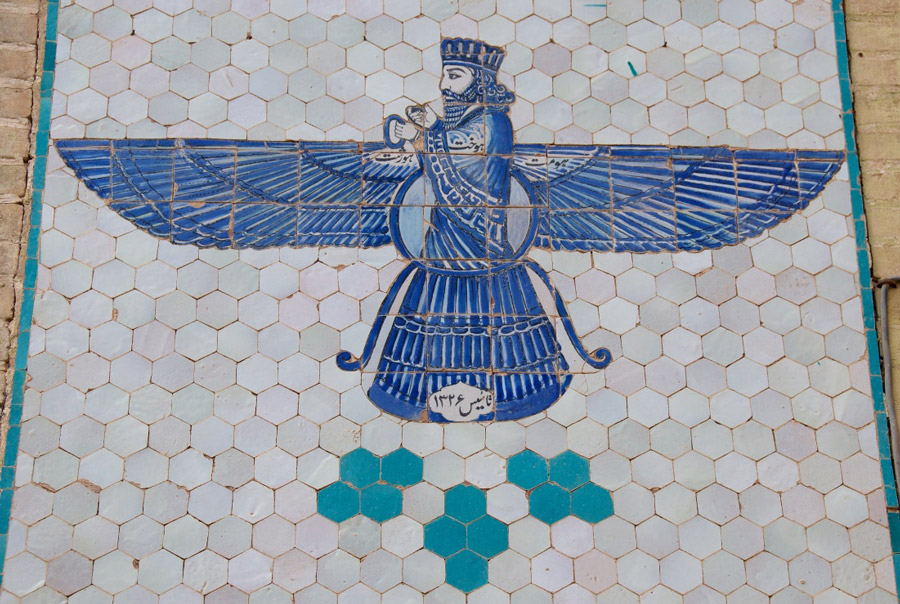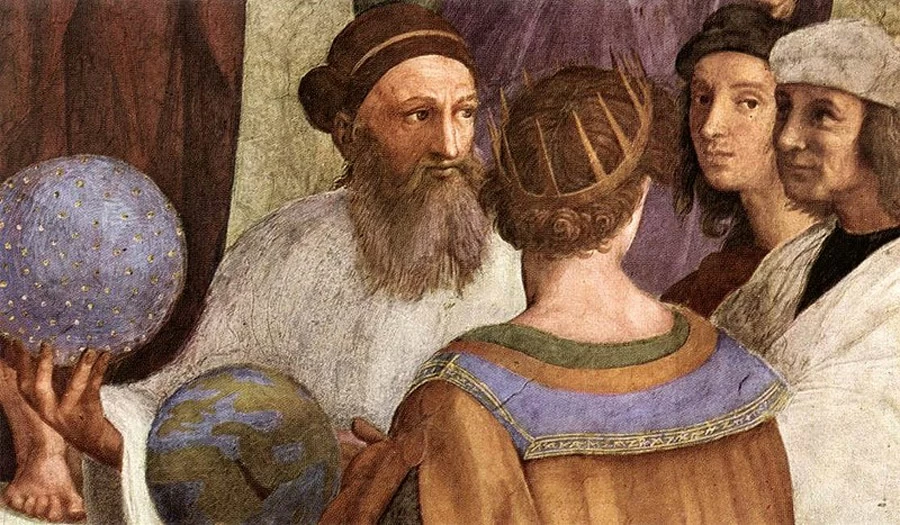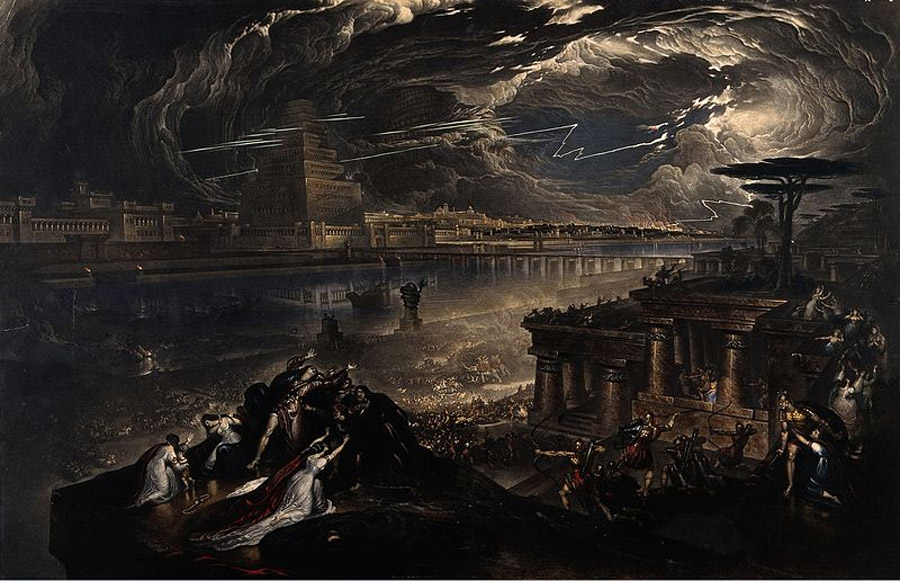Zoroastrianism is one of the world’s oldest monotheistic religions. Founded by the prophet Zoroaster in ancient Iran almost 3,500 years ago, for 1,000 of those years, it was the most powerful religion in the world.
It was the official religion of the ever-expanding Persia for over a millennia, from 600 BC to 650 AD. Nowadays it is one of the smallest active religions, with fewer than 90,000 followers.
This small enclave is all that survives of one of the greatest, and the oldest, religions in the world. How did this come to be?
What is Zoroastrianism?
The Zoroastrian faithful are monotheistic, believing in only one God: Ahura Mazda (meaning “wise lord”) and that it was He that created the world. Those who believe in Zoroastrianism typically pray several times a day and worship communally in a fire temple (known as an Agiary).
This does not mean that the Zoroastrians are fire worshipers, which might imply a more primitive religion. Instead they believe that the fire is a representation of Ahura Mazda’s light, or wisdom.
Their holy book is called the Avesta and, similarly to the Christian Bible, can be split into two sections. The oldest and core part of the scripture is mostly made up of Gathas, 17 hymns thought to be composed by the Prophet.
The Younger Avesta was written much later and is a reflection of the earlier sections. It offers a commentary on myths, stories, and detailed ritual observances.
History of Zoroastrianism
Zoroastrianism was founded by the Prophet Zoroaster. The exact date of its founding is uncertain, however linguistic comparisons with the Hindu text, the Rig Veda of 1200-1500 BC, together with archaeological evidence, allows for an approximate dating.

Zoroaster was born somewhere in northeast Iran or southwest Afghanistan. He was born during the Bronze Age, a time when polytheistic religions were predominant.
His name is a Greek rendering of the name Zarathustra, also called Zarathusti in Persian, or Zaratosht in Gujarati. A few details survive of his life: for example, we know he was born into the Spitama clan and worked as a priest. He married and had three sons and three daughters.
- Who Were The Nephilim? Biblical Demigods From Before The Flood
- Apollonius of Tyana Similarities to Jesus Christ
Zoroaster rejected the polytheistic religion of the time, claiming that it was a tool of oppression and that the many gods were false. He opposed animal sacrifices and rejected the use of the Haoma plant, used in rituals to create hallucinogenic visions.
His Divine Vision
When Zoroaster was 30 he had a divine vision of the God Ahura Mazda and his Amesha Spentas, the seven Holy Immortals that emanate from Him. Zoroaster was able to ask questions and received many answers from the vision, giving him his doctrinal foundation for the religion.
His entire worldview was converted from one of polytheism to monotheism. In fact, he turned on his old religion believing they were evil spirits, calling them minions of Angra Mainyu, a destructive spirit and Ahura Mazda’s rival.
It was not an easy task for Zoroaster to bring his conversion to the public. The local religious authorities, then as now recognizing the threat of a dissenting voice and new ideas to the orthodoxy, rejected it.

Zoroaster was cast out from the priesthood, forced to leave his home and relocate to somewhere more open to new ideas. He eventually found such a place in Bactria, ruled by King Vishtaspa and Queen Hutosa. They debated Zoroaster’s ideas, and then accepted them for their kingdom.
Zoroaster died in his late 70s, but the religion he founded would continue throughout the centuries.
Whispering in Abraham’s Ear
Despite the religion’s obscure beginnings, Zoroastrianism grew to become the state religion of three major Persian dynasties, at a time when the Persian empire was the largest in the world. Cyrus the Great, founder of the Achaemenid Persian Empire, was a devout follower and the under him the expansionist Persians spread of the religion through conquest and trade across Asia.
Possibly the most significant moment in this expansion came with the conquest of Babylon by the Persians in 539BC. In conquering the city, Cyrus freed the Babylonian Jews who had been captured after the fall of Jerusalem over 60 years earlier.
The descendants of these exiled Jews would go on to compile the Torah, the first five books of the Hebrew Bible, and they carried the Zoroastrian influence into their religion. Through this interaction, Zoroastrianism became a key source for the major Abrahamic religions: Judaism, Christianity, and Islam.

These influences are easy to spot. The Zoroastrian monotheism, opposition to false idols, demonology and belief in a judgement day, are all carried through to these later religions. Although such ideas likely predate even Zoroaster, his religion was the conduit through which these ideas arrived in the Bible and the Quran.
Muslim Conquest and the Fall
However, this influence was not to last. After almost 1,000 years as the state religion of Persia, it all came crashing down between 633 and 651 AD. Persia was conquered and fell before an expansionist, rapid and massively successful Muslim invasion.
- Dare You Enter the Ploutonion? Gateway to the Underworld at Hierapolis
- Mysteries of Surt’s Cave: Bandits, Mutilations, and the Fire Giant
The Arab conquerors charged Zoroastrians living in Persia extra taxes for retaining their religious practices. Laws were created and implemented to make life difficult for the Zoroastrians, forcing them to either convert or pay expensive taxes.
It was from here that Zoroastrianism became a minority religion in Iran and across the old Persian empire. The religion, reduced to a minor status, suffered was diminished further with the Mongol invasions, where many more of the religious texts were destroyed.
Zoroastrian Beliefs
The elements play a large part in the Zoroastrian religion. Fire is seen as a symbol of purity, as is water. With fire being the most prominent element, Zoroastrian temples, following the ancient example of the mythical three temples that came directly from Azura Mazda at the beginning of time, contain an altar with an eternal flame that burns continuously.
To honor their dead, Zoroastrians gave “sky burials.” Circular, flat-topped towers were constructed on which the dead were left exposed to the elements and animals until the bones were picked clean.
The bones that remained were then deposited in a lime pit, called an ossuary. This practice continued throughout history, right up until the 1970s in Iran, when it was finally made illegal.
Zoroastrianism Today
Today, this ancient religion is dying. There is little evidence of this religion continuing en-masse and it is suspected that there are only 80,000 to 90,000 Zoroastrians that remain. Yet despite this small number, the legacy of Zoroastrianism in the west looms much larger.
Perhaps the most famous practicing Zoroastrian in modern history was Freddie Mercury, lead singer of Queen. The name of the God Ahura Mazda is most likely familiar as the namesake for the Japanese car company.

The Game of Thrones HBO series featured the god Azor Ahai believed to have been inspired by Ahura Mazda. Azor Ahai emphasizes the cleansing purity of fire and seeks to defeat darkness.
You may not have heard of the religion itself, but the importance of Zoroastrianism cannot be denied. It was influence on one of the largest and greatest ancient empires, as well as many modern religions. Although largely forgotten today, its impact cannot be overstated.
Top Image: the fire temple at Baku Ateshgah. Source: saiko3p / Adobe Stock.
By Bipin Dimri.